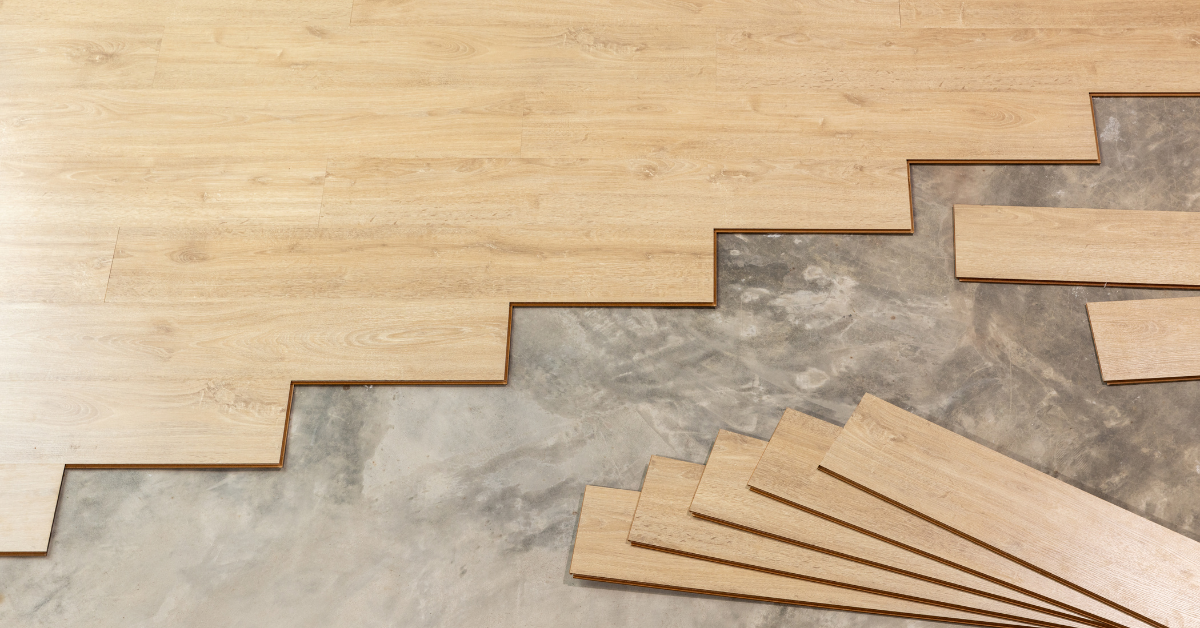Transform Your Home With Underfloor Heating: What You Need to Know
You might not know that underfloor heating can actually enhance the air quality in your home. This system distributes warmth evenly, eliminating the need for dust-gathering radiators. But before you make the leap, it’s essential to understand the types of systems available, whether electric or hydronic and how they fit into your home’s layout. With potential energy savings and the added comfort of warm floors, underfloor heating offers more than just a cosy upgrade. Are you ready to explore the specifics and discover if it’s the right choice for your space?
Key Takeaways
- Underfloor heating provides efficient and consistent warmth by evenly distributing heat across the floor surface.
- Electric systems are ideal for smaller spaces and quick heating, while hydronic systems suit larger areas and energy efficiency.
- Installation includes assessing insulation, choosing the right system, and following a detailed layout for even heat distribution.
- Initial costs vary by system type, with potential long-term savings from lower energy bills and available rebates.
- Regular maintenance, including checking connections and inspecting systems, ensures efficient and effective performance.
Benefits of Underfloor Heating
Among the many advantages of underfloor heating, its ability to provide consistent and efficient warmth stands out. By evenly distributing heat across the floor surface, you eliminate cold spots typical of traditional radiators. This system uses radiant heat, which gently warms objects and people in the room rather than just the air, resulting in a more stable and comfortable environment.
You’ll notice that the energy consumption is lower due to operating at reduced temperatures while achieving the same level of comfort.
Underfloor heating also offers enhanced space utilisation. Since the system is beneath the flooring, you’re free from the constraints of bulky radiators, allowing more flexibility in room design and furniture placement. This can be particularly beneficial in smaller spaces where every square foot matters.
Moreover, underfloor heating contributes to better air quality. Without radiators circulating dust, the system reduces allergens, making it a healthier choice, especially for those with respiratory concerns.
Additionally, underfloor heating systems are compatible with various floor types, from tiles to wood, increasing their versatility.
Types of Underfloor Heating Systems
Understanding the types of underfloor heating systems is key to maximizing the benefits discussed earlier. You’ll primarily encounter two types: electric and hydronic. Each has distinct characteristics that cater to different needs and environments.
Electric underfloor heating systems, often called dry systems, use electric cables or mats. They’re ideal for retrofitting existing spaces due to their thin profile. Installation is straightforward; mats or cables lay directly beneath your floor covering. They heat up quickly, making them suitable for smaller rooms or areas where rapid warmth is desired.
However, they may incur higher operating costs compared to hydronic systems.
Hydronic or wet systems circulate warm water through a network of pipes embedded in the floor. They’re more efficient for heating larger spaces or entire homes due to their lower operating costs.
Installation is more complex, often requiring a higher initial investment and consideration of floor height. Hydronic systems connect to your existing boiler or a separate heat source, offering compatibility with renewable energy technologies.
Choosing the right system involves evaluating your specific needs, such as room size, existing floor type, and energy efficiency goals.
Consider these factors carefully to guarantee you select the most suitable system for your home.
Installation Process Overview
The installation process for underfloor heating is a vital phase that requires careful planning and execution to guarantee peak performance and efficiency.
First, assess your floor type and existing insulation. Proper insulation is essential to prevent heat loss and maximize system effectiveness. Next, choose between electric and hydronic systems based on your specific needs and the type of flooring.
Begin with a detailed layout plan. Mark the areas where heating elements or pipes will go, ensuring even spacing to avoid cold spots.
For electric systems, install the heating mats or cables over a clean, dry subfloor, securing them with adhesive or fixing strips. For hydronic systems, lay the pipes in a serpentine or spiral pattern, maintaining consistent spacing.
Connect the system to the thermostat, ensuring all electrical connections meet local building codes and safety standards.
For hydronic systems, link the pipes to the manifold and boiler, checking for leaks and proper pressure.
Finally, cover the installation with a suitable floor finish, such as tile or engineered wood, allowing adequate time for curing.
Test the system thoroughly before use, ensuring uniform heat distribution throughout the space.
Cost Considerations
After meticulously planning and installing your underfloor heating system, it’s important to evaluate the financial implications. You’ve made a choice that can increase comfort and efficiency, but understanding the cost factors is essential for long-term satisfaction.
First, consider the initial investment. Electric systems generally cost between $10 to $20 per square foot, while hydronic systems range from $6 to $12 per square foot, excluding labour.Labourr costs can notably affect your budget, often accounting for 50% of the total expense.
Next, assess the operational costs. Electric systems tend to be more expensive to run, averaging $0.10 to $0.20 per square foot per day, depending on your local electricity rates. Hydronic systems, on the other hand, rely on heated water and are typically more cost-effective in the long run, especially if you have a high-efficiency boiler.
Factor in potential savings from increased energy efficiency. Underfloor heating allows for lower thermostat settings, possibly reducing energy bills by 10-20%.
Additionally, consider whether your system qualifies for any local energy rebates or incentives, which can offset initial costs. By carefully weighing these elements, you can make informed financial decisions about your underfloor heating system.
Maintenance and Care Tips
When maintaining your underfloor heating system, guarantee you regularly check both the thermostat and the system’s connections for any signs of wear or malfunction.
Examine electrical connections to verify they’re secure, and clean the thermostat regularly to prevent dust accumulation that could affect performance. If you notice unusual temperature fluctuations, this might indicate a faulty thermostat or connection issue.
Periodically inspect the floor covering for any areas that feel excessively hot or cold. This could signal an underlying problem with the heating elements.
If you have a hydronic system, annually check the fluid levels and inspect for leaks in the pipes. Leaks can lead to water damage and reduced efficiency.
Consider professional servicing at least once a year. A qualified technician can conduct a thorough inspection and maintenance, verifying all components function efficiently.
They’ll check for electrical continuity, measure resistance in heating cables, and flush hydronic systems if necessary.
Avoid placing heavy furniture directly over heating elements, as this can cause overheating and damage.
Keep an eye on your energy bills; unexpected increases could indicate inefficiency.
Frequently Asked Questions
How Does Underfloor Heating Impact Indoor Air Quality?
Underfloor heating enhances indoor air quality by minimizing dust circulation.
You won’t rely on forced air systems, which can stir up allergens. The radiant heat provides even warmth, reducing humidity and mould risk.
Your floors will stay dry, preventing dust mites from thriving. You’ll also experience fewer cold spots, which often contribute to condensation.
Therefore, underfloor heating creates a healthier, more comfortable living environment for you and your family.
Can Underfloor Heating Be Used With All Types of Flooring?
Imagine your floor as a canvas, ready to embrace warmth. Underfloor heating can partner with most flooring types like tile, stone, laminate, and engineered wood.
However, it hesitates with solid wood due to expansion risks and the carpet may insulate too much heat.
You’ll need to check the flooring’s thermal conductivity and manufacturer guidelines to verify compatibility.
This thoughtful pairing guarantees efficient heat distribution and a cosy, inviting home atmosphere.
Is Underfloor Heating Energy Efficient Compared to Traditional Heating?
Underfloor heating is more energy-efficient than traditional heating systems due to its radiant heat distribution.
You’ll experience consistent warmth at lower temperatures, reducing energy consumption. It operates at 29°C or less, whereas radiators run hotter, around 65-75°C.
This efficiency is due to even heat spread, minimizing thermal loss.
If paired with proper insulation and a programmable thermostat, you can expect substantial savings and improved comfort over conventional methods.
Does Underfloor Heating Affect Room Humidity Levels?
Have you considered how underfloor heating might impact your room’s humidity?
While traditional radiators can dry the air, underfloor heating offers a more balanced approach. It evenly distributes heat, reducing temperature fluctuations and maintaining consistent humidity levels.
This system minimizes the potential for moisture-related issues by keeping surfaces warmer, thereby discouraging condensation.
You’ll enjoy a comfortable environment without the extremes, making your home both cosy and efficient.
How Long Does It Take for Underfloor Heating to Warm a Room?
Underfloor heating typically takes about 30 minutes to 2 hours to warm a room, depending on factors like floor type, insulation, and system efficiency.
If you’ve got ceramic tiles, they’ll heat up faster than wood.
Make certain your system is properly insulated to reduce heat loss and improve efficiency.
You can also use a programmable thermostat to optimize heating times and energy use, making sure your room reaches the desired temperature promptly.
Conclusion
Underfloor heating transforms your home into a cosy haven, much like a warm hearth beneath your feet. By choosing between electric and hydronic systems, you sculpt the foundation of comfort tailored to your space. Proper installation is key, acting as the keystone for performance and efficiency. With diligent maintenance, this invisible warmth symbolizes both innovation and sustainability, promising reduced energy costs. Embrace this technology for a modern sanctuary that envelops you in consistent, efficient warmth.




